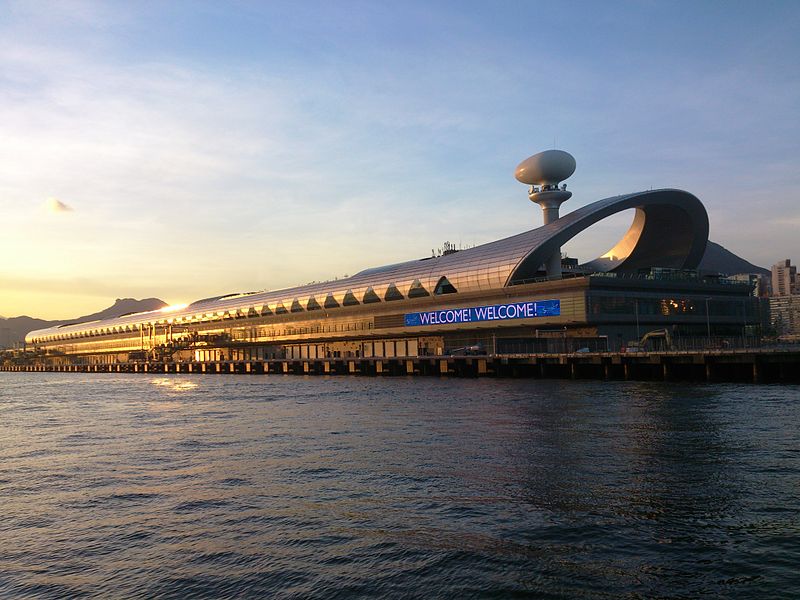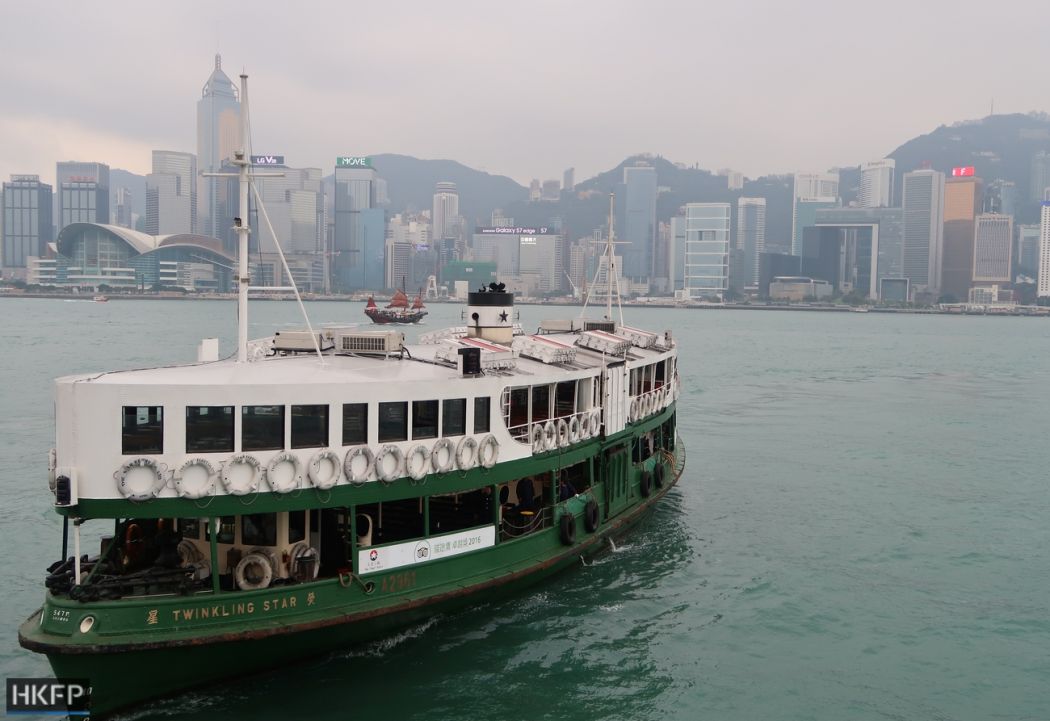What was charmingly anachronistic a decade ago now looks more like poverty porn. Decaying piers, rotting coils of rope littered with cigarette butts, clouds of black smoke from the diesel stacks and, improbably in 2022, all-male crews: scores of old codgers below decks refilling cup noodles from curiously large kettles.
The fact that the Star Ferry service is deep in the red is no surprise: it lost money even before the pandemic, even with 20 million annual passengers. That’s quite a feat considering the franchise is allowed to pocket all the rental income from its piers in Central, Wan Chai and Tsim Sha Tsui, and pays no pier rental itself.

The service is a victim of its own “iconic” status. Operators and government have shown an almost criminal lack of imagination and ambition, chugging along enjoying the number three spot in every “Five Things You Absolutely Must Do Before You Die” article ever written.
While Norway was rolling out high-speed carbon-fibre electric ferries with magnetic rope-free induction-charging moorings all over the fjords, and Uber was preparing Uber Boat riverbuses in London, the most exciting thing the Star Ferry could announce to lawmakers last year was free pier wi-fi and a gaslit connection to the government’s data portal. (The firm wasn’t streaming real-time data, which one might have assumed from the news, but simply sent its fixed schedule and fare table to the data portal — probably by fax).
So what can be done? A Reuters op-ed recently suggested tycoons could step in and save the iconic green and white boats — tempting, given the monthly losses are quite small money in Hong Kong terms: a day’s parking tickets, to put it in perspective.
But tycoons won’t touch it under the current model. The Star Ferry operates on a 15-year franchise, which means nobody is going to invest serious money to improve the infrastructure.
Those piers alone, particularly Tsim Sha Tsui’s decrepit hulk, could be worth a fortune with investment, but a franchisee can’t invest. Even if they could, the risk that another firm will come swinging over the rigging and steal it on lease renewal day is too much to bear.

So a first step in saving the Star Ferry could be to buy back the franchise, adopt an MTR property model or a model something like the West Kowloon Cultural District Authority. Create the Star Ferry Authority, quasi-private, with enough freedom from boneheaded bureaucracy to do something ambitious and enough secure income ahead to invest and innovate.
Next, make the Star Ferry useful again. The ferry’s “iconic” status didn’t come from the outstanding views, it arose from the combination of utility and beauty, the juxtaposition of the mundane commute with the dazzling cityscape, a brief stasis between shores giving the everyday journey an almost meditative quality.
But ferries today make up just one per cent of public transport trips in Hong Kong, a figure the government uses (in its usual circular way) to suggest ferries are a sideshow.
As such, we’ve had stubborn resistance to the idea of new routes: Tuen Mun to Central, for example, which could provide an excellent commute for people fed up of being crammed onto crawling buses.
And we’ve suffered the pain of mind-boggingly bad initiatives like the Water Taxi, for which the best solution involves the Noonday Gun and about 90 pounds of red-hot cannonballs.

With just an ounce of ambition from the Transport Department, ferries could not only bring commuters to work and tourists to waterfront lawns in Kai Tak and West Kowloon. They also have huge potential to manage the meteoric growth in the local freight business.
Other cities have tapped water transport with cargo bikes for a zero-carbon delivery system, and ferry piers as mini-hubs for the likes of HKTV Mall and SF Express make perfect sense.
This is where technology comes in: electric boats, automated moorings for fast turnaround and cost-efficient operation, and spacious lower decks for bikes, cargo bikes and dogs (good dogs only, of course) — expanding the local customer base and diversifying away from mainland tourists.
One of my favourite ferry encounters was a guy with an e-scooter, Doug, who ended up lending me the machine for several months while he recovered from surgery.
Doug, who lives in ‘downtown’ Wan Chai, loves the mix of the e-mobility and the ferry, because the scooter transforms the looooong walk between city and pier into a short hop.
Linking up the various modes — walking, biking, scooting, MTR and bus — is a must for keeping the ferry alive.
Bicycles are allowed on the ferry right now, to be fair, but only on the off-peak Wan Chai service, and it costs more to take a bicycle across the harbour ($20.2 at weekends) than it does to drive a car through the Cross-Harbour Tunnel ($20).

E-scooter Doug told me he was thinking of getting a Brompton bike next, because he loves the portability of the e-scooter but prefers something more active (and is concerned about the illegality of the scooter, probably because I keep sending him pictures of e-scooter arrests).
That’s a great transport progression: not MTR to car, as we’ve seen so much during the pandemic, but e-scooter to folding bike, with the ferry as the backbone.
Contrast Doug’s experience with the sad tale from former FTU lawmaker Ho Kai-ming, who, during Ted Hui Chi-fung’s landmark 2017 “bicycle motion” debate (possibly LegCo’s finest hour), relayed how he’d wished, as a rookie lawmaker, to commute from Mong Kok to Tamar by bicycle.
He found it difficult. Bikes are banned at Tamar and banned from the Central Star Ferry route (and cycling between the Central pier and Tamar requires at least one dismount), so he reverted to the MTR.
Ho is now the undersecretary for Labour and Welfare — what a missed opportunity for active transport to have had a senior government official with a daily bike and ferry habit.
If the Star Ferry dies, it won’t be because of Covid. It will be because of idiocy like its bike rules which turned people like Ho away, and government policy which shifted the piers and then doggedly kept them isolated — physically and financially — from the city.
Support HKFP | Policies & Ethics | Error/typo? | Contact Us | Newsletter | Transparency & Annual Report | Apps
Help safeguard press freedom & keep HKFP free for all readers by supporting our team
| HKFP is an impartial platform & does not necessarily share the views of opinion writers or advertisers. HKFP presents a diversity of views & regularly invites figures across the political spectrum to write for us. Press freedom is guaranteed under the Basic Law, security law, Bill of Rights and Chinese constitution. Opinion pieces aim to point out errors or defects in the government, law or policies, or aim to suggest ideas or alterations via legal means without an intention of hatred, discontent or hostility against the authorities or other communities. |

More HKFP OPINION:
HKFP has an impartial stance, transparent funding, and balanced coverage guided by an Ethics Code and Corrections Policy.
Support press freedom & help us surpass 1,000 monthly Patrons: 100% independent, governed by an ethics code & not-for-profit.










